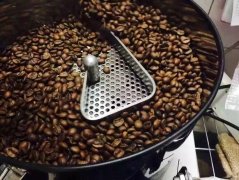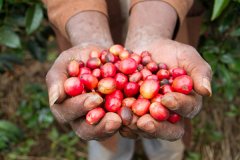Interpretation of the name of coffee beans and the grading of coffee beans

From: coffee town (teach coffee culture and make more people like coffee) 2014-03-04 11:50:59
At present, the grading system of coffee bean producing areas in the world is not unified, and each coffee producing country has its own grading system and grading name, so you may see the following words on the coffee logo: "SHB", "AA+", "Supremo", "Extra-Fancy", "round bean / adzuki bean", etc., these are the grading names of coffee beans. Roasted cooked beans on the market sometimes mark the grading of individual coffee. The more detailed the grading of coffee, the better the quality of the coffee. But regular coffee is not marked.
Central American coffee is graded on the basis of planting altitude, and coffee beans above 4500 feet above sea level are marked "SHB (Strictly Hard Bean)". "AA+" is the highest grade of Kenyan coffee, and only batches with particularly good flavor and few defects are allowed to be labeled "AA+". "AA" is the largest, "AB" is smaller, and "PB" is round beans. Colombia in South America uses the appearance size and defect rate of coffee beans as the grading standard, and "Supremo" represents the largest grain. It is worth noting that the appearance size of coffee beans has nothing to do with their flavor, but the higher the altitude, the better the taste of the coffee.
The name of the country is immediately followed by the marking of small producing areas. Take Ethiopia-Ethiopia (Ethiopia Yirgacheffe) as an example. Ethiopia's Ethiopia is the name of the coffee producing country, indicating that it is a "single coffee". Yega Xuefei Yirgacheffe is a long and narrow high-altitude producing area in the Sidamo producing area of Ethiopia (Sidamo). Different small producing areas mean different flavor characteristics. For example, places in southern Ethiopia near Somalia produce the famous
Ethiopia-Harald Mocha (Ethiopia Harrar). Harald mocha has wine-like aromas, blueberry or grape flavors, thick palate, fresh and bright Yega Chevy, citrus or lemon peel aromas, and a thin palate.
However, some coffee beans have a list of names immediately after the name of a small producing area, which may be the name of a coffee farm, cooperative, or raw bean processing plant. For example, the long list of names of Guatemala, Antigua and Los Crop (Guatemala Antigua SHB- Finca Los Volcanes 12) tells us the following information:
Producing country: Guatemala (Guatemala)-Guatemala is a famous coffee producer in Central America.
Producing area: Antigua (Antigua)-this is the famous volcanic coffee producing area of the country.
Grading: extremely hard beans (SHB)-indicates that this coffee grows at an altitude of more than 4500 feet.
Production Manor: Finca Los Volcanes Manor-"Finca" is the Spanish word for "Estate", meaning farm.
Harvest year: 2012-the year is for roasters' reference, so the year is usually not marked on the label of roasted ripe beans on the market.
In the coffee beans sold in the market, in order to reduce the trouble and identification burden of consumers, they generally do not make such complicated labels. There may be great differences in the flavor of coffee beans in different small producing areas and different years. Professional roasters will taste the raw coffee beans of the same year in different producing areas every year, and adjust the way of roasting and blending, so that consumers can get coffee with stable flavor and slight difference.
However, although the coffee taste indication described above is a common practice of coffee roasters, because the domestic coffee market is in its infancy, consumers can not taste the differences in all kinds of beans, so the coffee beans sold on the market are mixed. There is often a phenomenon of inferior quality, so when consumers buy high-level coffee beans, they still need to keep their eyes open and carefully identify trustworthy businesses!
Important Notice :
前街咖啡 FrontStreet Coffee has moved to new addredd:
FrontStreet Coffee Address: 315,Donghua East Road,GuangZhou
Tel:020 38364473
- Prev

What are the treatment methods of coffee beans G1 G2 G3 G4 respectively?
In fact, these Grade-2,Grade-3 do not exactly represent the level of quality. What does that mean? As follows: washing: Grade-1;Grade- 2 days sun: Grade-3;Grade-4;Grade-5 and Grade-1 several points to note: a) regardless of washing and sunlight, there is Gr-1, the condition is zero defect and Premium Cup. Whether it's washing or tanning, Gr-1 is the best of the boutiques or Cup of.
- Next

Colombian coffee raw bean grading method
One: according to the defect rate, the number of defective beans allowed per 500 gr sample:-Private raw bean exporter: 72 defects-National Coffee Council: 42 defects defective beans are divided into two types:-first: known as first-level defects-second: called second-level defects first: main defects (defects that affect coffee taste characteristics): black beans, moldy beans.
Related
- Guji coffee producing area of Guji, Ethiopia: Humbela, Shakiso, Wulaga
- What is the most expensive variety of Qiloso in BOP multi-variety group?
- How to store the coffee beans bought home?
- Why are Yemeni coffee beans so rare now?
- Ethiopian Sidamo all Red Fruit Sun Sun Santa Vini Coffee beans
- SOE is mostly sour? What does it mean? Is it a single bean? what's the difference between it and Italian blending?
- Is Italian coffee beans suitable for making hand-brewed coffee?
- How to choose coffee beans when making cold coffee? What kind of coffee beans are suitable for making cold coffee?
- Just entered the pit to make coffee, what kind of coffee beans should be chosen?
- Can only Japan buy real Blue Mountain Coffee? What are authentic Jamaican Blue Mountain coffee beans?

